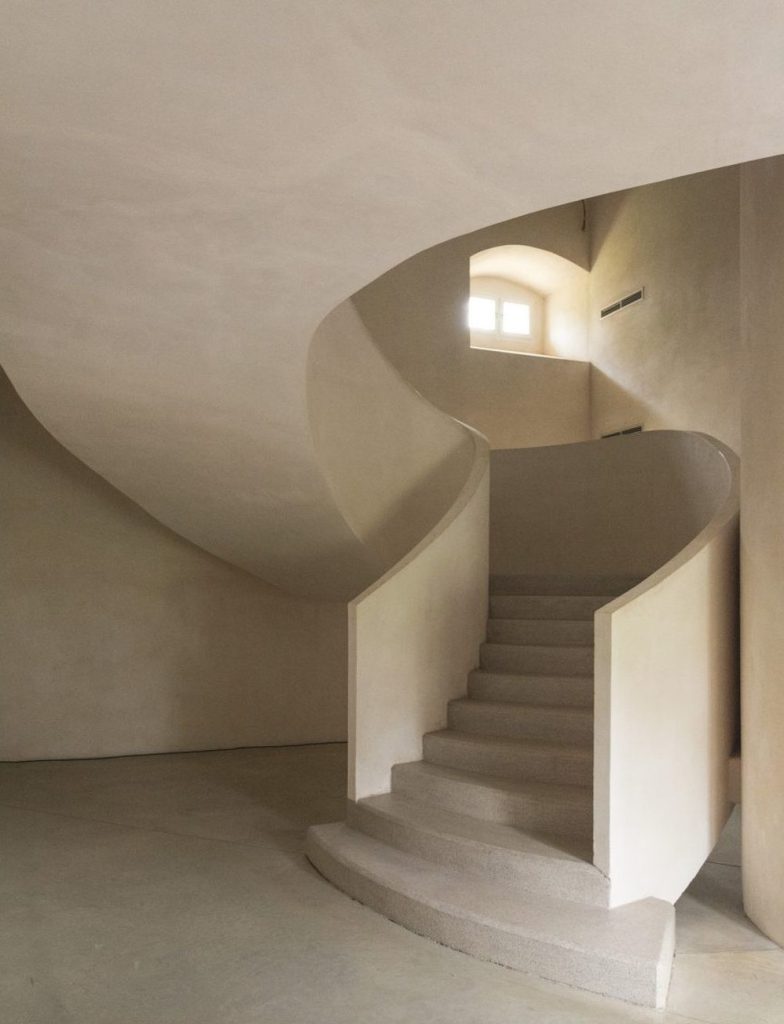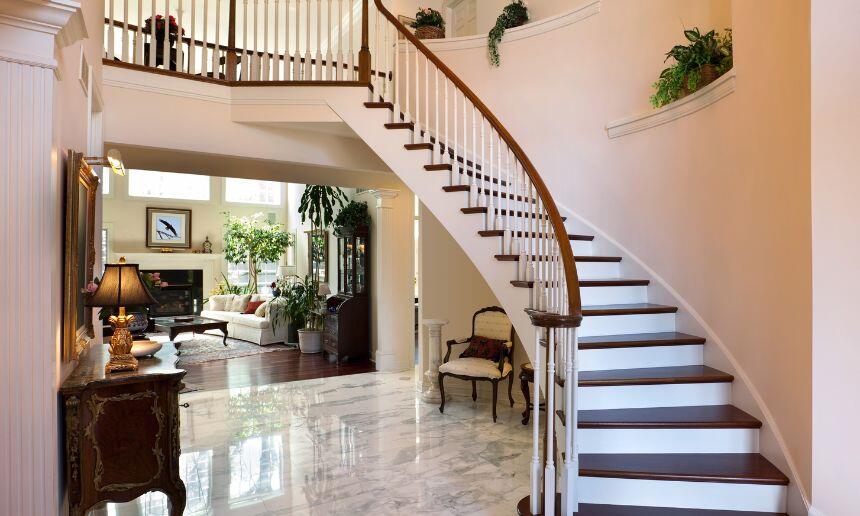Half Wall Vs Railing – A Comparison
While we often don’t consider stairs more than a means to get from one level to another, they bring so much more to our house.
Stairs also provide an effective visual transition between these two spaces and often dominate the surrounding decor.
Depending on the layout of the house, there is a variety of different types of stairs you can go with.
However, you shouldn’t neglect safety measures, particularly if you have kids or the elderly in your household.
Installing a half wall or railing on the side or on top of the stairs is the most commonly used way to safety-proof your stairs.
While they serve a similar purpose, each of them brings something unique to your house in terms of aesthetics, safety, and cost.
In this article I’ll compare half wall vs railing to see how they differ and which one is a better fit for certain kinds of homeowners.
| Half Wall | Railing | |
| Safety | Provides some protection from falls but not as much as a railing | Provides a secure barrier to prevent falls |
| Visibilty | Blocks some visibility and may make the space feel more closed off | Allows for an open and airy feel and better visibility |
| Design | Offers a traditional and classic look, can be used to define separate areas | Offers a more modern and sleek look, can be used to create a sense of continuity |
| Installation | Typically requires more time and effort for installation and finishing work | Generally easier to install and requires less finishing work |
| Cost | Can be more expensive due to the need for additional framing and finishing work | Typically less expensive due to simpler installation and fewer materials needed |
Table of Contents
What Is A Half Wall?

The half wall is a short interior wall that doesn’t extend all the way to the ceiling.
Typically 3-4 feet high, it’s rather versatile but mostly used on the stairs or a deck for safety purposes.
They can close the broadside opening next to the staircase and act as a safety rail to prevent anyone from falling and tumbling off the edge.
In addition, the half wall can serve as a great backdrop for the lower-level furniture. Plus, it’s a nice spot to hang paintings or family pictures.
Besides stairs, the half wall is used to provide more privacy in some areas of the house.
You can use them to break up an open space without the need to fully divide the whole room with a full-length wall.
A lot of people favor using half walls for the above-mentioned purposes as they’re generally much stronger and more durable compared to other options.
What Is A Railing?

The railing is a more modern alternative to the half wall. It’s probably the most popular method of establishing a barrier at the side of a staircase.
Its main purpose is to prevent anyone moving up and down the stairs from falling off the side. So, it must be strong enough to resist breaking in case someone pushes or falls onto it.
There’s a variety of different materials and designs used for railing, so they can fit any staircase and suit any type of overall house decor.
Wood is mainly used when trying to accomplish a more classic and traditional appearance. Steel, aluminum, and wrought iron provide more room for unique designs.
Glass is another option, especially when trying to emphasize the view beyond the railing.
Unlike some other barrier types, the railing provides an opportunity to achieve a wide variety of appealing and original styles.
Half Wall Vs Railing – What’s The Difference?
Even though their primary purpose is mostly the same, half walls and railings have some significant distinctions, making each of them a preferred solution in certain situations.
Each of them has some advantages and some downsides that can make them more suitable for the particular homeowner.
Below, I’ll list the most significant differences between the two.
Materials
When it comes to half walls, things are pretty simple.
They don’t differ much in construction from regular walls, so they’re mainly made of concrete material.
If you decide to install a railing, you will have a much wider choice of material options available. Railings can be made of steel, aluminum, wrought iron, wood, or glass,
Installation
Between the two, the railing is much easier to install. Installing half wall will take much more time, effort, and knowledge, as will potential repair or replacement.
On the other hand, half wall installation is easier on the budget.
Materials used for railings, such as glass, wrought iron, wood, or aluminum, are much more expensive than the concrete used for half walls.
This is the reason why in commercial settings, such as factories, half walls are the preferred option.
Design
As they can be made from different materials, railings also have more versatility when it comes to a design of a specific barrier.
While the design option of a half wall is fairly limited, the railing can be easily molded and shaped to allow for different styles and unique designs.
With railings, the only limit is the interior designer’s creativity.
Durability
If you want a staircase barrier that will last longer, you should opt for a half wall. In most cases, it will provide better durability than railings.
Wood, metal, and iron that railings are commonly made of are more prone to moisture and breakage which shortens their life span.
Still, the railing can serve you a long time, too, but will require regular maintenance and care.
Half Wall Vs Railing – Which One To Choose
When deciding between half wall and railing for your staircase, the things you should consider are your personal preference and what the rest of your home looks like.
The half wall is a more traditional option and, even though it’s making a comeback, it’s still mainly seen in older homes.
The railing is more modern and its versatility will allow you to create a better fit with the rest of the interior design elements.
The half wall, however, will provide a bit more privacy and some acoustic protection, so it’s better for people that appreciate that.
Nevertheless, opting for an open railing instead of an opaque half wall will make the staircase and the whole area look more spacious and increase brightness.
Conclusion
Both half wall and railing can work great and add to the appeal and the value of your home.
The key is to carefully consider which one of them fits better your personal taste, lifestyle, and the existing house arrangement.
Take your time and make sure that your choice is well thought-off, as replacing the stairs barrier, no matter if it’s a half wall or railing, is neither cheap nor easy.
The options are, more or less, endless.
So, you’re sure to find something that will keep you and your family safe and protected on the stairs while, at the same time, improving the overall interior outlook of your home.



















































































